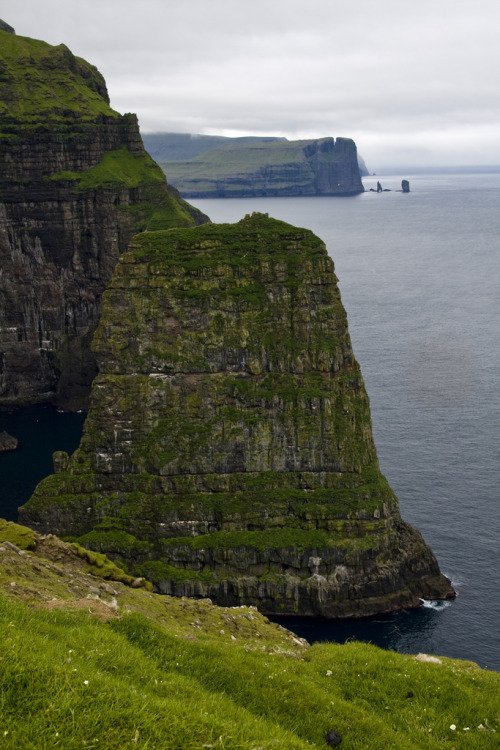I hate Icelandic. I love Icelandic. It makes sense. It’s beautiful. I hate that it won’t stick in my brain, no matter how hard I try to jam it in. I hate that it makes sense on a page but descends into an undifferentiated mumble whenever I hear it. I hate that I can understand people from Akureyri and Egilsstaðir perfectly when I live in Reykjavík, where no one even attempts to open their mouths as they talk. I love breaking the words apart – light-mother, sight-ring-division – and I am offended at my very core when someone says að chilla. I have severely mixed opinions on the sentence Afi Ása á á á á Á (Ási’s grandfather has a sheep on a river, called Á).
Icelandic has a reputation of being incredibly difficult for an English speaker to learn. While this is broadly true, it’s more a problem with cultural biases and method of teaching than anything. We’re not dealing with a different language family here (shout out to my poor friends trying to learn Finnish). Icelandic and English are quite closely related, and modern Icelandic borrows a lot from English, and older speakers of English or speakers coming from Scotland or North England will probably perk up their ears if there’s an Icelander speaking slowly. There are all the easy ones – barn-bairn child, kirkja-kirk-church, tún-tun-hillock – and then there’s the math of Icelandic, the breaking-apart that makes sense if you’re dismembering the word on a page.
Take the word fiskur.
Icelandic is a gendered language and has gender markers at the end of many nouns, including most masculine ones. If you’re puzzling out Icelandic and you see that gender marker, drop it. (They’re a bit harder to recognize when declined, but they’re still visible).
So. Chop off the -ur, masculine singular nominative ending, and you have fisk.
Sk- in Icelandic is interesting. In continuous speech the k softens slightly. It’s not dropped, not exactly, but it might not be emphasized as much as an English speaker emphasizes a plosive. Press down harder on it until it’s almost gone, til it blurs into the s, and you get sh in English.
Fisk becomes fish.
This happens in other words: diskur becomes dish. Skjöld is a borderline case, interrupted by the j, but if you transmute the j to a front vowel (e, i) then you get shi-öld. Say it again, faster. Shield.
Vaða has one of those scary rune things inside it. Tighten your mouth around it: harden it to a d. The -a at the end is unnecessary – that just marks that it’s a verb infinitive. Icelanders can’t determine between v and w, so switch them around. You have wad, but you are at the swimming pool and vaða is on the sign over the kiddy pool. Oh. Wade. Try lengthening the vowel. See what you get.
Ég vann. I worked. Or – switch the letters. I wann. I won. Same in Icelandic, really – viltu vinna á kaffihús? Viltu vinna verðlaun? Work and winning are the same. They both net you peningur, and if you drop the masculine and say it over and over again: peningpeningpeningpeninpennipennipenny. Penny.
Hv- words are strange: in spoken language, hvalur sounds like kvalur. Kv and hv have the same phonetic value. If you push on the hv-, though, soften it, turn it into hw, you have hwalur, and then hwal, and then you turn on the diphthongization and hwail, and in the dialect of English I speak you don’t say hw you say wh and it’s whale and hvað is what because you push down on the ð. This unfortunately doesn’t work for hver because hvar means where but think of the Great Vowel Shift in English, the sounds traveling down your mouth, and maybe whar to where sounds better, especially if you’re a northerner.
Look into the vocabulary you vaguely remember from high school Chaucer and pulp fantasy novels. Ráðhús, city hall, rood-house, house of wisdom. Ég kann, I know how, I ken. Þjóðfræði, Theoden, and fræði a form of fróði – Frodo the wise, Theoden ruler of his people, people-wisdom, folk-study, folkloristics. The sk rule doesn’t happen if there’s an r. Skrifa, cut the infinitive ending off, skrif, scrive, scrivener, writing. These languages split ages ago but Icelandic’s grammar is so conservative and the Germanic languages so that you can hear the echoes, however faintly, ringing across the jörð (hit the j so it’s a vowel, and just press the ð down to the th in think, not all the way to d – e-örth, earth)
Anyways, here’s some Icelandic rap that uses the line “bad girls get me Rousey like Ronda”


